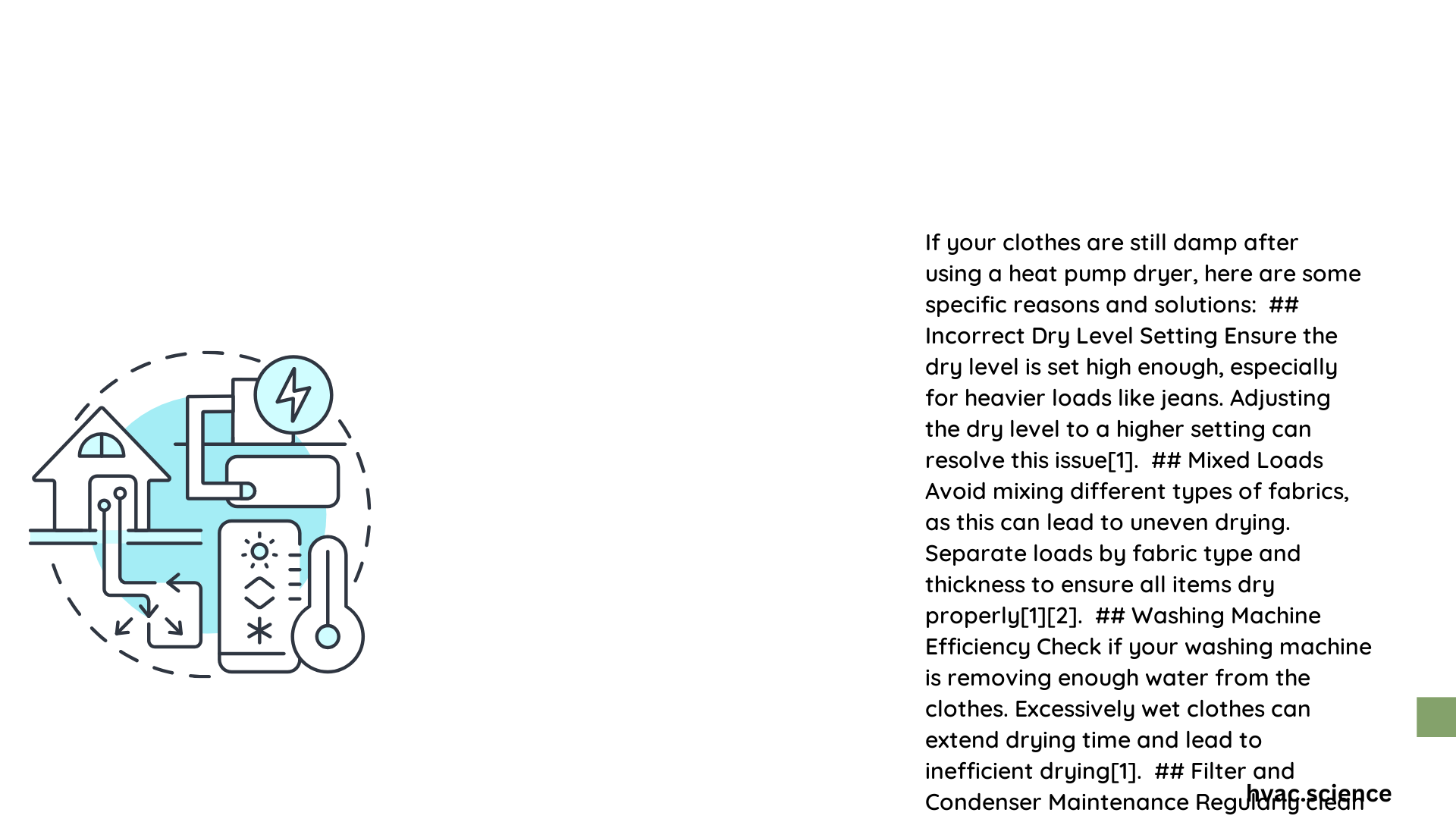Heat pump dryers are advanced appliances designed for energy-efficient clothes drying, but users often encounter frustrating scenarios where garments remain wet after a complete cycle. Understanding the root causes of damp clothes can help diagnose and resolve performance issues, ensuring your heat pump dryer operates at peak efficiency and delivers perfectly dry laundry every time.
Why Do Heat Pump Dryer Clothes Remain Damp?
What Causes Moisture Sensor Failures?
Heat pump dryers rely on sophisticated moisture sensors to determine drying completion. When these sensors malfunction, several problems can emerge:
- Sensor Contamination: Lint and fabric residue can obstruct sensor accuracy
- Inconsistent Readings: Mixed fabric loads confuse sensor performance
- Calibration Issues: Sensors might require professional recalibration
How Can Improper Load Affect Drying Performance?
| Load Type | Potential Drying Impact | Recommended Action |
|---|---|---|
| Overloaded | Reduced air circulation | Reduce load size by 25-30% |
| Mixed Fabrics | Uneven moisture detection | Sort clothes by fabric weight |
| Dense Materials | Extended drying time | Use specialized heavy-duty cycle |
What Role Does Room Temperature Play?
Optimal heat pump dryer performance depends on ambient temperature. Ideal operating conditions include:
- Room temperature between 19-24°C
- Adequate ventilation
- Minimal humidity levels
How to Diagnose Potential Mechanical Issues?
Filter and Condenser Maintenance
- Clean filters monthly
- Inspect condenser unit quarterly
- Remove lint buildup systematically
What Are Advanced Troubleshooting Techniques?
Sensor Calibration Steps
- Disconnect power for 5 minutes
- Reset manufacturer settings
- Run diagnostic cycle
- Verify sensor functionality
Can Professional Intervention Help?
While many issues can be self-resolved, complex sensor or mechanical problems might require:
- Manufacturer warranty service
- Certified appliance technician evaluation
- Potential component replacement
Practical Prevention Strategies
- Regular maintenance
- Proper load management
- Use manufacturer-recommended cycles
- Monitor drying performance
Technical Performance Metrics
Average Drying Times by Fabric:
– Cotton/Linen: 60-90 minutes
– Synthetic Fabrics: 45-60 minutes
– Heavy Items: 90-120 minutes
Energy Efficiency Considerations
Heat pump dryers consume approximately 40-50% less energy compared to traditional models. Persistent damp clothes indicate potential efficiency loss, warranting immediate investigation.
Key Takeaway
Addressing heat pump dryer clothes remaining damp requires systematic diagnosis, understanding sensor technology, and implementing targeted maintenance strategies.
Reference:
– Samsung Support
– Electrolux Support
– GreenBuildingAdvisor

